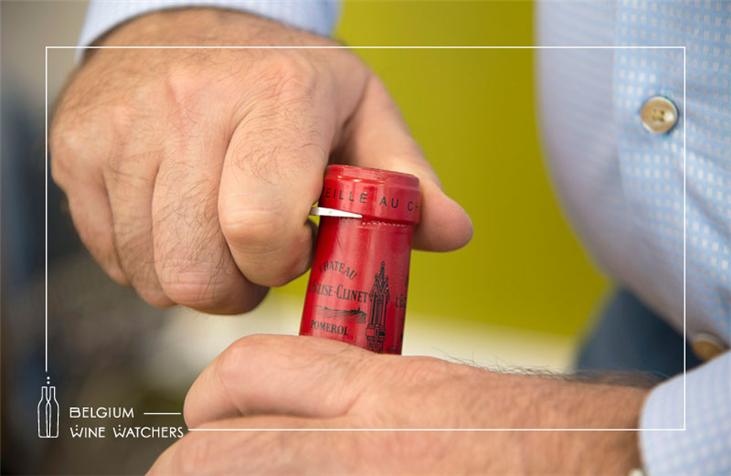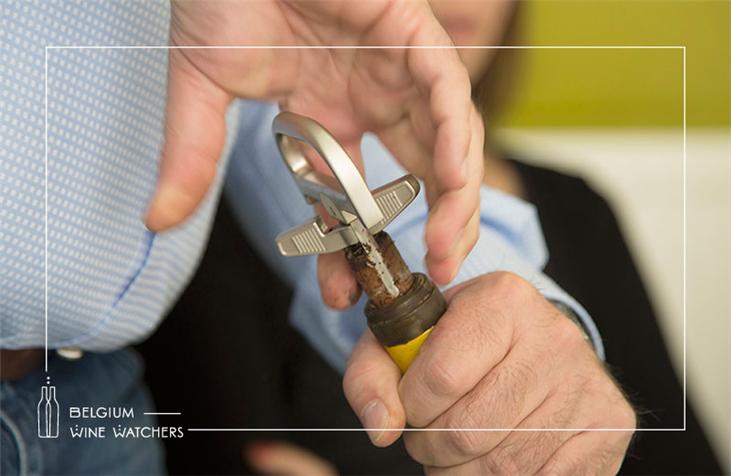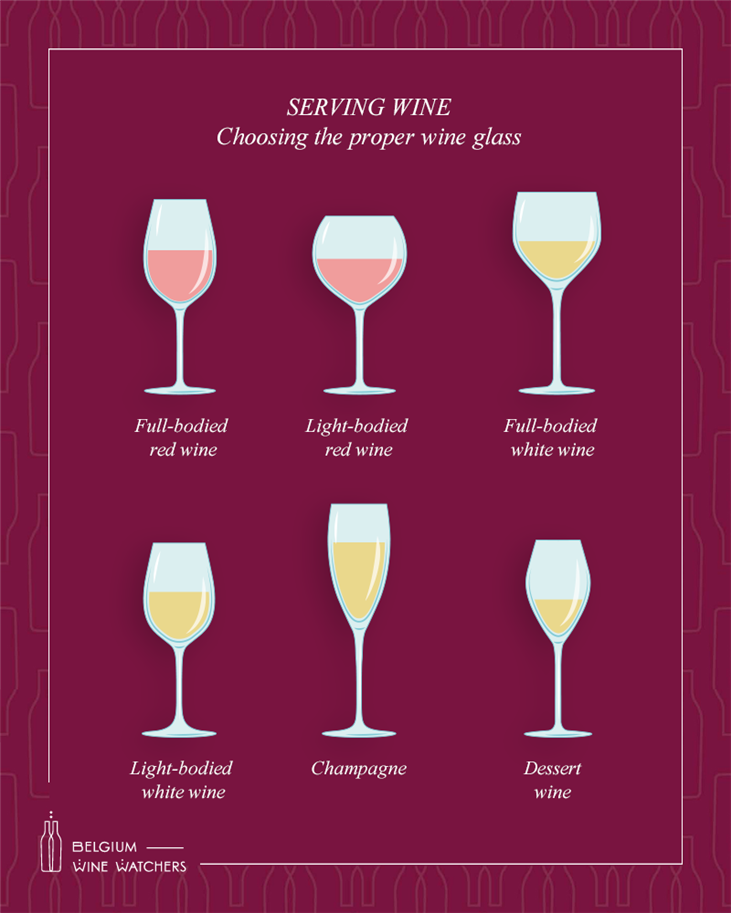Serving a wine is almost an art in itself. It’s part of the experience of enjoying a fine wine, even at home. When serving an exclusive vintage wine from Belgium Wine Watchers - for example a bottle of Barolo wine that aged for more than a decade - you want to show the wine the proper respect. Our 5 serving tips will give you the necessary confidence to serve your special wines to friends and family with style.
1. Choosing the proper wine glass
If you want to truly experience the taste of wine as intended the glass does matter. The shape of the glass helps to translate the different sensations in wine: bouquet (quality and intensity of the aroma), texture or ‘mouthfeel’, flavour and finish or aftertaste.
Red wine glasses
Red wines are served in rounder bowled wine glasses with a wider opening. This allows more air in the glass which smoothens the complex aromas and flavours of red wines. A slightly taller red wine glass like the Bordeaux glass is designed for full-bodied, heavier red wines. To enjoy the more delicate flavours of a lighter red wine you preferably choose a shorter glass with rounder bowl like the Burgundy glass.
White wine glasses
White wines are served in a smaller and U-shaped wine glasses to preserve the floral aromas and maintain a cooler temperature. When serving a full-bodied or older white wine make sure you pick a white wine glass with a larger bowl to emphasise the bold flavours of these wines.
Champagne and dessert wine glasses
A champagne glass or flute is upright and narrower than most wine glasses so the bubbles last longer. A dessert wine is much smaller because it needs to direct the wine to the back of the mouth so the sweetness doesn’t overwhelm you. They also have a higher alcohol content, so a smaller glass is by default more suitable.
There are wine glasses designed for different types of wine (Bordeaux, Burgundy …) but you don’t need the full range to appreciate a good wine. Just choose the glasses fit to your drinking preferences.
2. The right temperature
A standard rule is to serve white wine chilled and red wine at room temperature. This is rather vague advice as serving a wine at the wrong temperature can damage the delicate aromas and flavour. It’s important to pay attention to the right temperature.
It’s true red wines taste more muted when cold but that doesn’t mean they should be served ‘warm’ neither: between 16 °C and 18 °C is perfect for red wines. High tannin wines smooth out at warmer temperatures while light red wines taste better at the cooler end of the spectrum.
White wines flourish between 8 °C and 12 °C. Oak-aged white wines taste better at temperatures leaning towards 12 °C while light zesty wines may be served cooler. Be careful not to serve your white wine too cold: you will miss out on the complexity of its flavour.
Champagnes and dessert wines are best served at an ‘ice cold’ temperature between 5 °C and 7 °C. To truly enjoy their sparkling freshness you may put a young bottle of champagne or wine in the freezer 1 hour before serving. Older champagnes and wines taste best at a slightly higher temperature as the complex aromas become more prominent when served not too cold.
3. Opening an older bottle of wine
When the moment has arrived to open an aged bottle you don’t want the old natural cork to crumble or break. If you use a waiter’s corkscrew make sure the spiral of the corkscrew has 5 turns (more suitable for older and longer corks) and is only made of metal or with a teflon coating because other types may destroy old corks.
How yo use a waiter’s corkscrew:
-
Place the sommelier knife under the bottom lip and cut the foil.
-
Set the screw (with 5 turns) just off center and rotate straight into the cork.
-
Screw into the cork until only one curl remains. Try not to go through the cork all the way as cork dust will fall into the wine.
-
Lever on the bottom lip, then the top and ease the cork out.
If the cork is dry and tends to crumble it may be sunken and you better use a two pronged corkscrew, designed for sensitive corks and ideal to open an older bottle of wine. Using a 2 pronged corkscrew requires more care and skill so you might want to invest a little time in practicing on a less expensive bottle. Be aware the 2 pronged corkscrew is not suitable for loose corks.
How yo use a two prong corkscrew:
-
Gently insert the longer prong first between the cork and the bottle and then insert the short prong on the side.
-
Carefully work the two prongs down in a back-and-forth motion.
-
Once fully inserted pull and twist to remove the cork.
4. Decanting wine
Basically a decanter increases the oxygen exposure to the wine, which softens tannins and releases aromas. There are many shapes to choose from and each shape is designed to decant a specific type of wine. Decanting is not only a red wines’ privilege as vintage white wines and older champagnes also benefit from decanting.
Old and young wines are being decanted for different reasons:
Decanting young wines
Many young wines have a relatively high level of dissolved gasses. By pouring the wine from the bottle to the decanter you remove these gasses and add oxygen, which smoothens the tannins and results in a more balanced whole.
Decant young wines several hours before you serve them to give the wine a chance to bloom and develop a fuller taste. Use a decanter with a larger bottom and pour the wine with full force to let the oxygen in and swirl the decanter to open the wine up.
Decanting old wines
Old wines can throw off sediment as they age. By decanting an old wine you separate the wine from its sediment. Yet we prefer not to decant our old wines but to carefully pour the wine directly in the glass as older wines - especially Pinot Noir wines - may oxidize very fast. While pouring watch out for the sediment not to end up in the glass.
If you choose to decant your old wine you may use a decanter sieve to avoid sediment to end up in the decanter or backlight the bottle - while pouring - with a candle to stop at the right moment.
Old wines should be decanted a few moments before they are served. The taste of old wines has already evolved and is often just the way it was intended to be. Slowly and carefully decant the wine in a decanter with a small bottom that doesn’t let in too much oxygen as it destroys the wines taste and aromas.
5. How to pour a wine
Use a clean napkin to clean the opened bottle’s opening and remove possible cork dust. Position the bottle in the palm of your hand with your thumb inserted in the recess of the bottle and pour the wine into the glass - leave the glass on the table. A standard glass of wine is between 150 and 180 ml and mostly a half glass full unless you’re serving in a larger red wine glass with rounder bowl. Twist the bottle above the glass and lift the bottle. When you finished pouring the wine you may wipe the neck of the bottle again to prevent any remaining wine from drying on the bottle’s opening.






